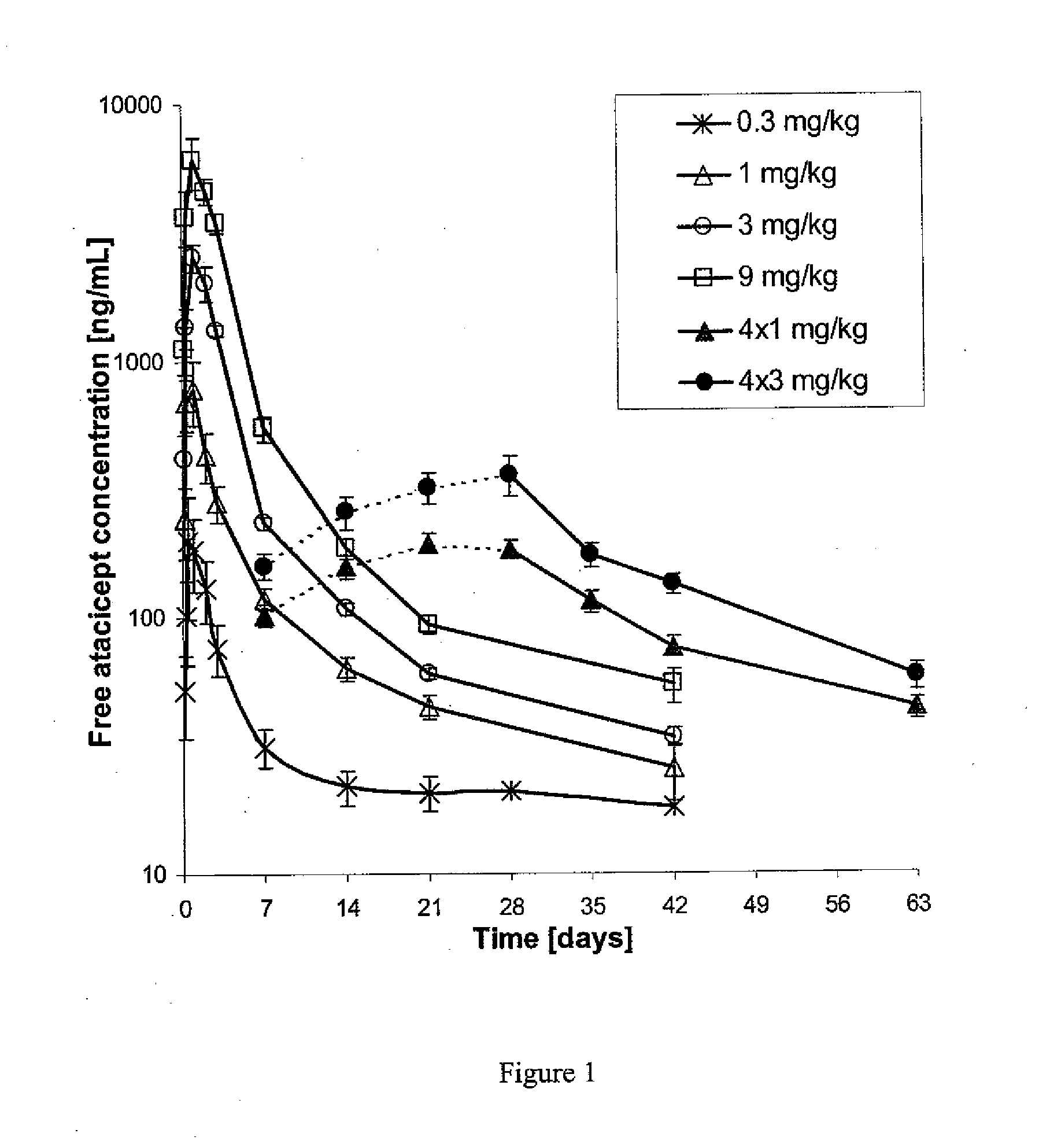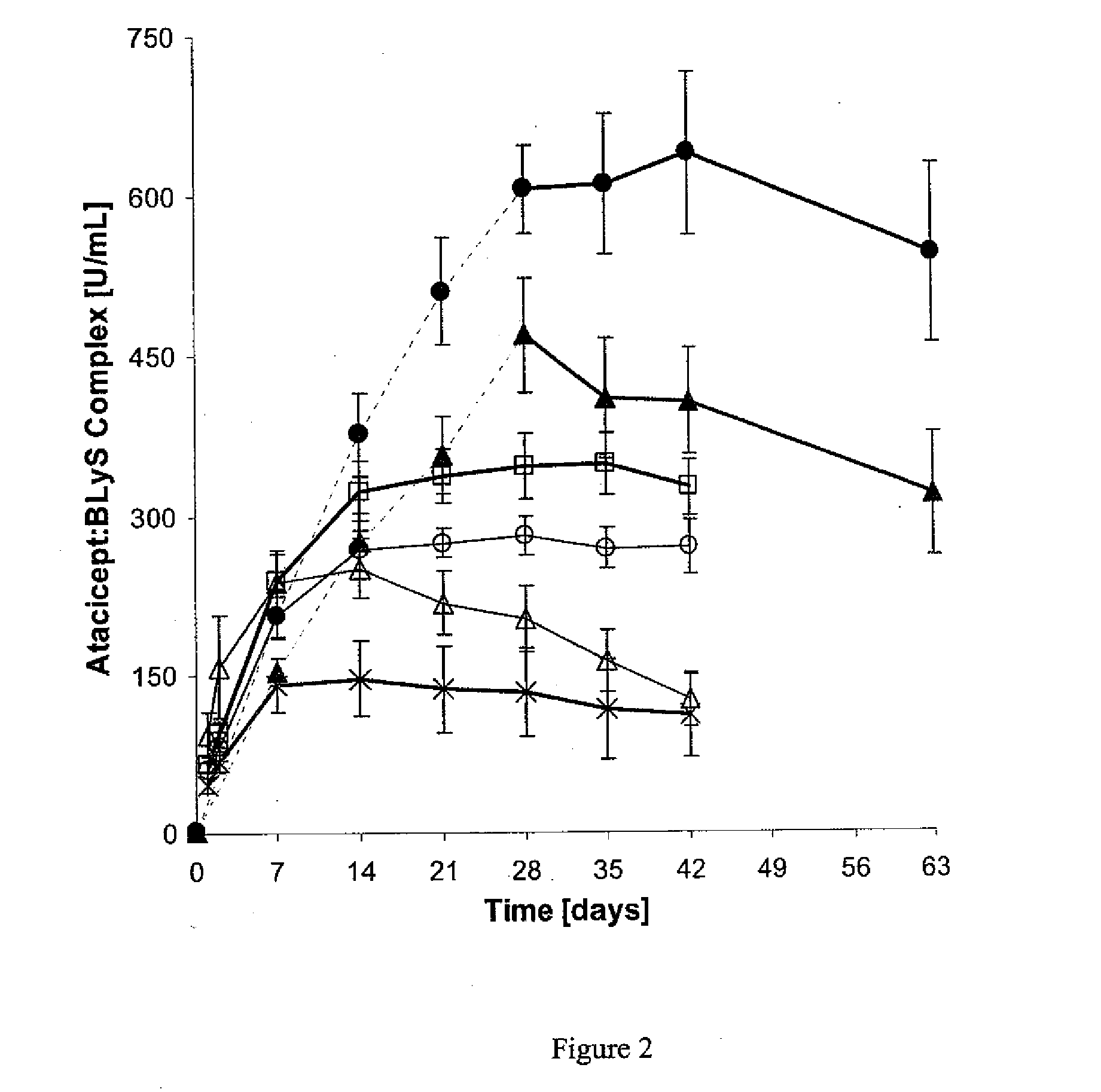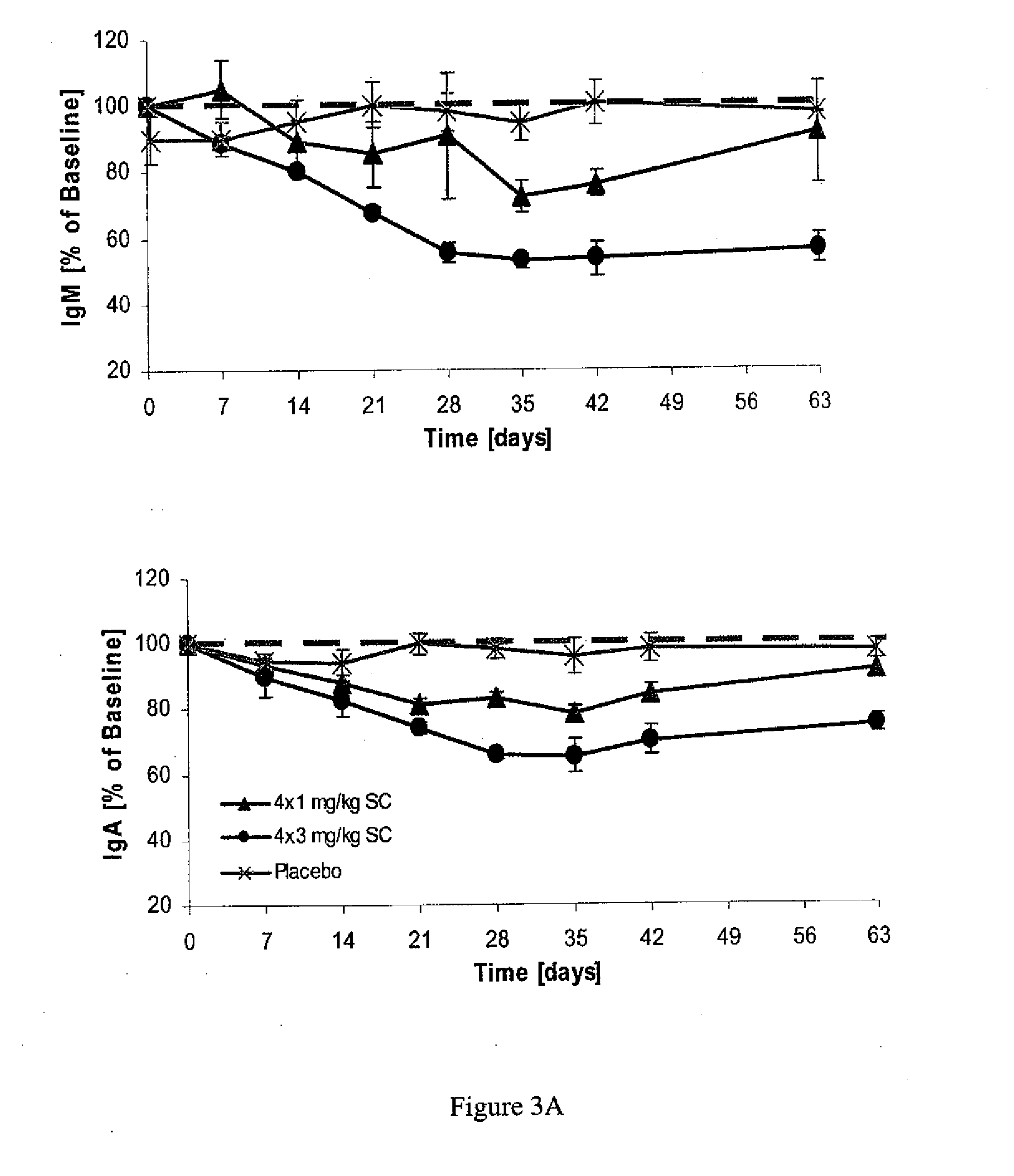DOSING METHODS FOR TREATING AUTOIMMUNE DISEASES USING A TACI-Ig FUSION PROTEIN SUCH AS ATACICEPT
a technology of taci-ig fusion and autoimmune diseases, which is applied in the field of treating autoimmune diseases or disorders of the immune system, can solve the problems of frequent flaring of the disease, no cure for sle, and inability to keep patients in remission
- Summary
- Abstract
- Description
- Claims
- Application Information
AI Technical Summary
Benefits of technology
Problems solved by technology
Method used
Image
Examples
example 1
Subcutaneous Administration of Atacicept
[0072]This phase Ib, double-blind, placebo-controlled, dose-escalating trial comprised six cohorts (n=8 each, except for cohort 5, n='7) of patients treated with atacicept or placebo in a 3:1 ratio. Cohorts 1-4 received a single subcutaneous dose of placebo, or 0.3, 1, 3, or 9 mg / kg of atacicept. Cohorts 5 and 6 received four weekly doses of placebo, or 1 or 3 mg / kg of atacicept (see Table 1). Patients were followed for 6 (cohorts 1-4) or 9 (cohorts 5 and 6) weeks. Outcome measures included: (i) systemic and local tolerability of atacicept; (ii) frequency of adverse events (AEs); (iii) pharmacokinetics and pharmacodynamics of atacicept, including effects on lymphocyte subpopulations and Ig levels; and (iv) measures of SLE disease activity.
[0073]Patients with mild-to-moderate SLE were enrolled. Biologic activity of atacicept was demonstrated by dose-dependent reductions in immunoglobulin levels and in mature and total B cells. This effect was m...
example 2
Intravenous Administration of Atacicept
[0087]This phase Ib, double-blind, placebo-controlled, dose-escalating trial comprised four cohorts (n=6 each) of patients treated intravenously with atacicept or placebo in a 3:1 ratio. Cohorts 1-3 received a single dose of placebo, 3, 9, or 18 mg / kg of atacicept. Cohort 4 received two doses of placebo or 9 mg / kg of atacicept, the second dose occurring at three weeks after the initial dose (see Table 1). Outcome measures included: (i) systemic and local tolerability of intravenous atacicept; (ii) frequency of adverse events (AEs); (iii) pharmacokinetics and pharmacodynamics of intravenous atacicept, including effects on lymphocyte subpopulations and Ig levels; and (iv) measures of SLE disease activity. Subjects were evaluated over a 6-week (cohorts 1-3) or 9-week (cohort 4) period; subjects from cohorts 3 and 4 returned at study days 84 and 120 for PK and biomarker sampling. Serum PK markers were sampled as follows: (i) for the single-dose Coh...
PUM
| Property | Measurement | Unit |
|---|---|---|
| pH | aaaaa | aaaaa |
| time | aaaaa | aaaaa |
| time | aaaaa | aaaaa |
Abstract
Description
Claims
Application Information
 Login to view more
Login to view more - R&D Engineer
- R&D Manager
- IP Professional
- Industry Leading Data Capabilities
- Powerful AI technology
- Patent DNA Extraction
Browse by: Latest US Patents, China's latest patents, Technical Efficacy Thesaurus, Application Domain, Technology Topic.
© 2024 PatSnap. All rights reserved.Legal|Privacy policy|Modern Slavery Act Transparency Statement|Sitemap



